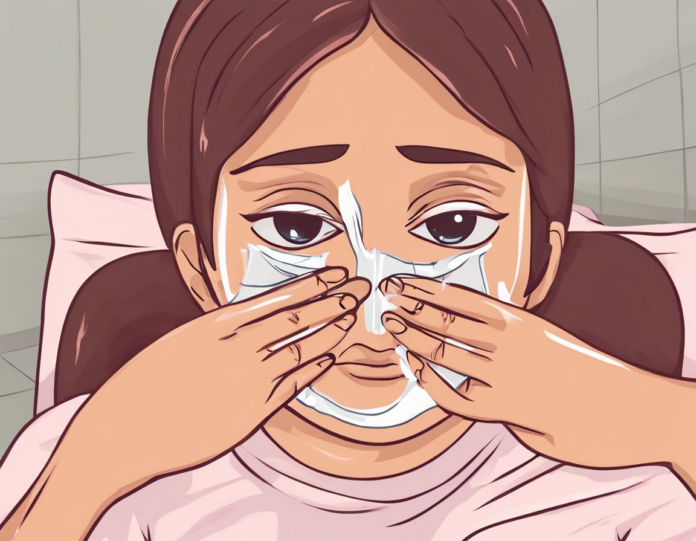Eye flu, also known as conjunctivitis, is a common condition that causes redness, itching, and inflammation of the eye. It can be caused by a viral or bacterial infection, allergies, or irritants like smoke and chlorine. While mild cases of eye flu often clear up on their own, there are several home remedies that can help alleviate symptoms and speed up the healing process. In this comprehensive guide, we will explore various natural treatments and preventive measures to manage eye flu effectively.
Symptoms of Eye Flu
Before we delve into the home remedies, let’s first identify the common symptoms of eye flu:
- Redness in the white of the eye
- Watery or thick discharge from the eye
- Itching or burning sensation
- Swollen eyelids
- Sensitivity to light
- Blurred vision
If you experience any of these symptoms, it’s crucial to consult a healthcare professional to determine the underlying cause of your eye flu. In the meantime, you can try the following home remedies to relieve discomfort and promote healing:
Warm Compress
A warm compress can help soothe the eyes and reduce inflammation. Here’s how to make a warm compress:
- Boil water and let it cool to a warm but comfortable temperature.
- Soak a clean washcloth in the warm water.
- Gently wring out the excess water and place the washcloth over your closed eyes for 5-10 minutes.
- Repeat this process several times a day to alleviate symptoms.
Cold Compress
Alternatively, a cold compress can also provide relief for eye flu symptoms. Here’s how to make a cold compress:
- Wrap a few ice cubes in a clean cloth or use a cold gel pack.
- Close your eyes and place the cold compress over your eyelids for a few minutes.
- Repeat as needed to reduce redness and swelling.
Tea Bags
Tea bags can help reduce inflammation and soothe irritated eyes. The tannins in tea have natural astringent properties that can help alleviate eye flu symptoms. Here’s how to use tea bags for eye relief:
- Steep two tea bags in hot water for a few minutes.
- Remove the tea bags and let them cool to a comfortable temperature.
- Place the tea bags over your closed eyes for 10-15 minutes.
- Repeat this process a few times a day for relief.
Cucumber Slices
Cucumber slices are not just for spa treatments; they can also help reduce swelling and soothe irritated eyes. Here’s how to use cucumber slices for eye flu treatment:
- Chill a cucumber in the refrigerator for about 30 minutes.
- Cut the cucumber into thin slices.
- Lie down and place the cucumber slices over your closed eyes for 10-15 minutes.
- Relax and enjoy the cooling sensation.
Honey
Honey has natural antibacterial and soothing properties that can help with eye flu symptoms. Here’s how to use honey for eye relief:
- Mix a teaspoon of raw honey with a cup of boiled and cooled water.
- Use a clean dropper to apply a few drops of the honey solution to the affected eye.
- Blink several times to spread the solution across the eye.
- Repeat this process a few times a day for relief.
Aloe Vera
Aloe vera is well-known for its healing properties and can help with eye flu symptoms. Here’s how to use aloe vera gel for eye relief:
- Extract fresh aloe vera gel from an aloe leaf.
- Apply a small amount of the gel around the affected eye, avoiding direct contact with the eye.
- Leave it on for 15-20 minutes, then rinse off with lukewarm water.
- Repeat this process a few times a day for relief.
Rose Water
Rose water is a natural remedy that can help reduce redness and inflammation in the eyes. Here’s how to use rose water for eye relief:
- Soak a cotton ball in chilled rose water.
- Gently wipe the cotton ball across your closed eyelids.
- Leave it on for a few minutes to let the rose water soothe your eyes.
- Repeat this process multiple times a day for relief.
Frequently Asked Questions (FAQs)
1. Can eye flu spread from person to person?
Eye flu, especially viral conjunctivitis, can spread through direct contact with infected individuals or contaminated surfaces. It’s essential to practice good hygiene to prevent the spread of the infection.
2. Is it safe to wear contact lenses during eye flu?
It’s best to avoid wearing contact lenses until your symptoms have resolved to prevent further irritation and potential contamination. Consult your eye care provider for guidance on when it’s safe to resume wearing contact lenses.
3. How long does eye flu typically last?
The duration of eye flu can vary depending on the underlying cause. Viral conjunctivitis may last 1-2 weeks, while bacterial conjunctivitis can be effectively treated with antibiotics within a few days.
4. When should I seek medical attention for eye flu?
If your symptoms worsen or persist despite home remedies, or if you experience severe pain, vision changes, or discharge that is thick and yellow or green in color, it’s crucial to consult a healthcare provider for proper diagnosis and treatment.
5. Can eye flu be prevented?
Practicing good hand hygiene, avoiding touching your eyes with unwashed hands, and disinfecting surfaces regularly can help reduce the risk of contracting eye flu. If you are prone to allergies, taking necessary precautions can also prevent allergic conjunctivitis.
In conclusion, while mild cases of eye flu can be managed effectively with home remedies, it’s essential to seek medical attention if symptoms persist or worsen. By incorporating these natural treatments and preventive measures into your routine, you can alleviate discomfort, promote healing, and safeguard your eye health.




















